SUMMARY
VENOM: None
PREVALENCE: Common
ACTIVE PERIOD: Most active during the day
KEY ID FEATURES: Dark brown, black or tan, ~ 1.5-2 meters when mature
BEHAVIOR: Very fast and readily willing to bite, but will almost always try to flee when encountered
SIZE: Medium/Large - 1.5-2m
IUCN: NE - Not Evaluated
OTHER: Can be mistaken with cobras
QUICK ASSESSMENT 0-10
GALLERY
IMPORTANT: Many snakes have significant variance in coloration and pattern even within the same species. There can also be extreme differences in appearance from juveniles to adults so it is important to never assume you have properly identified a snake.
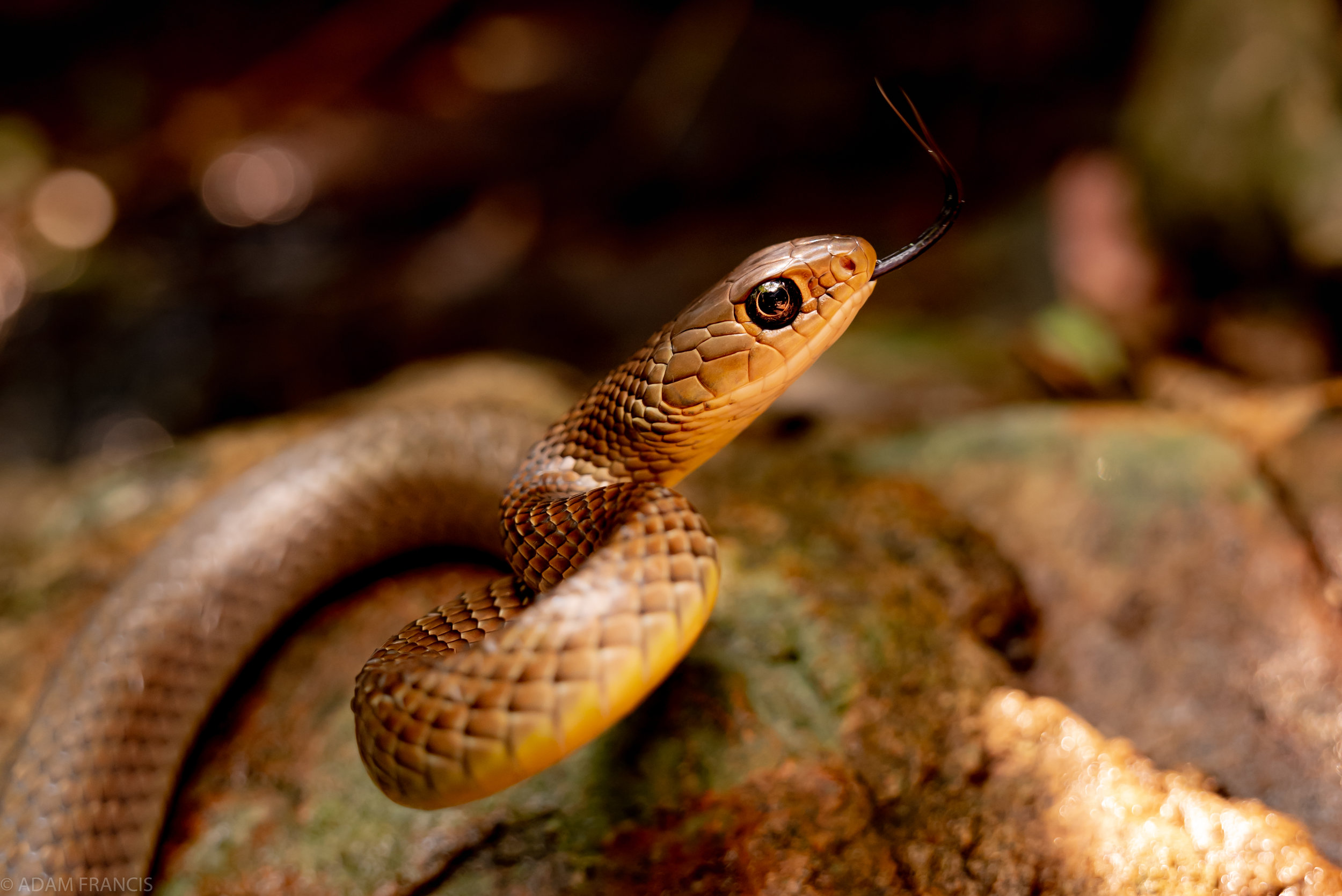
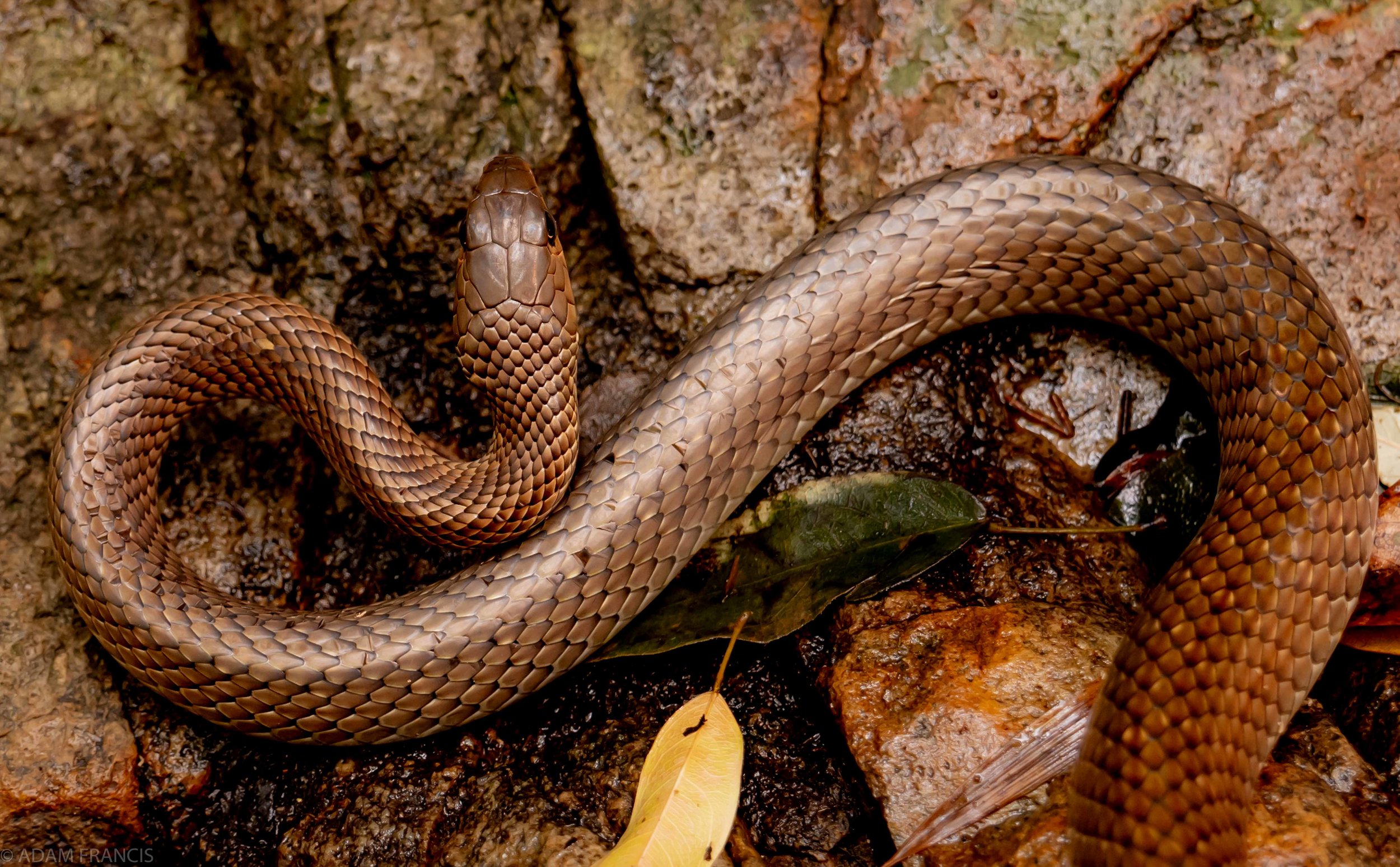
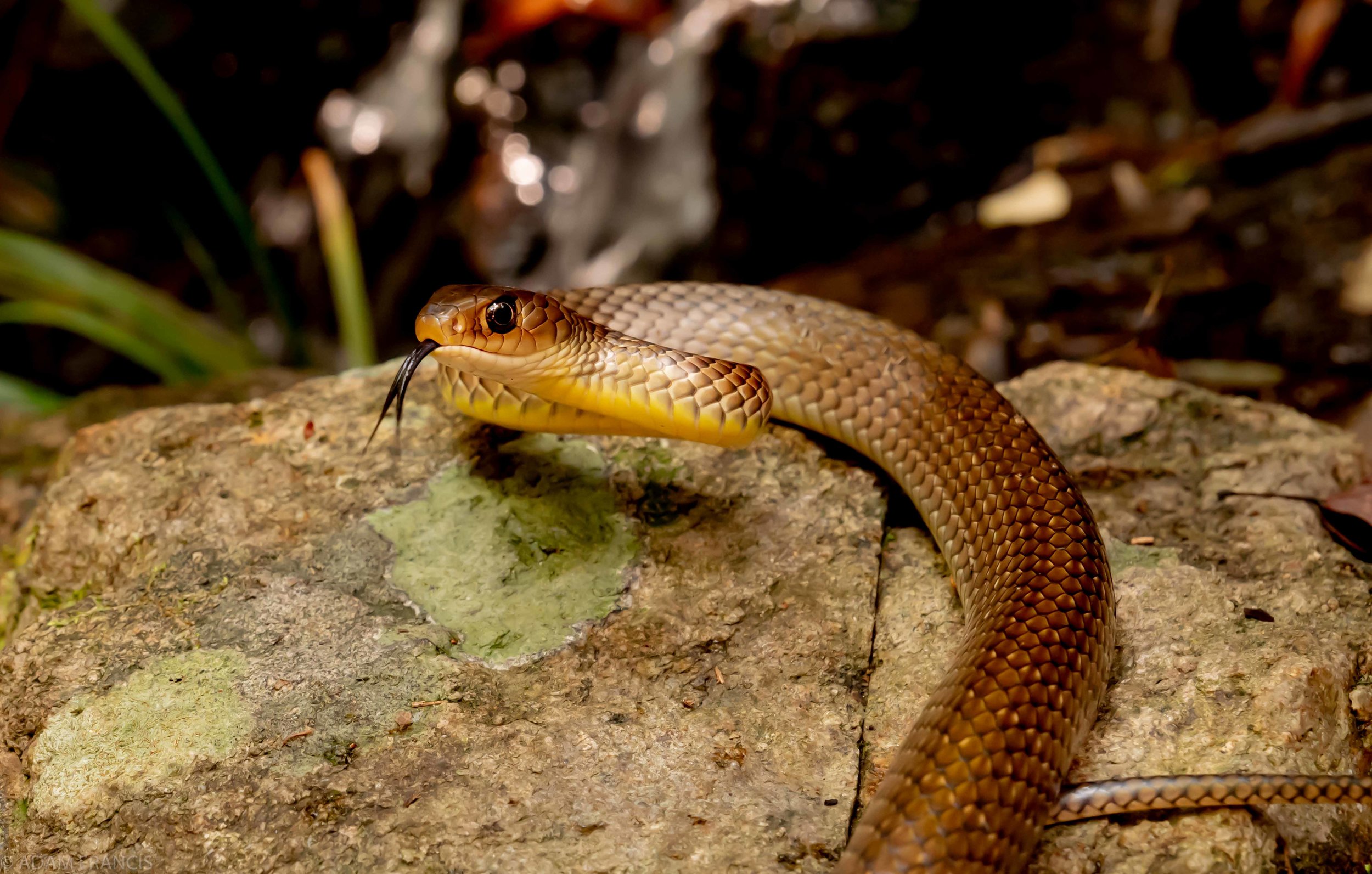
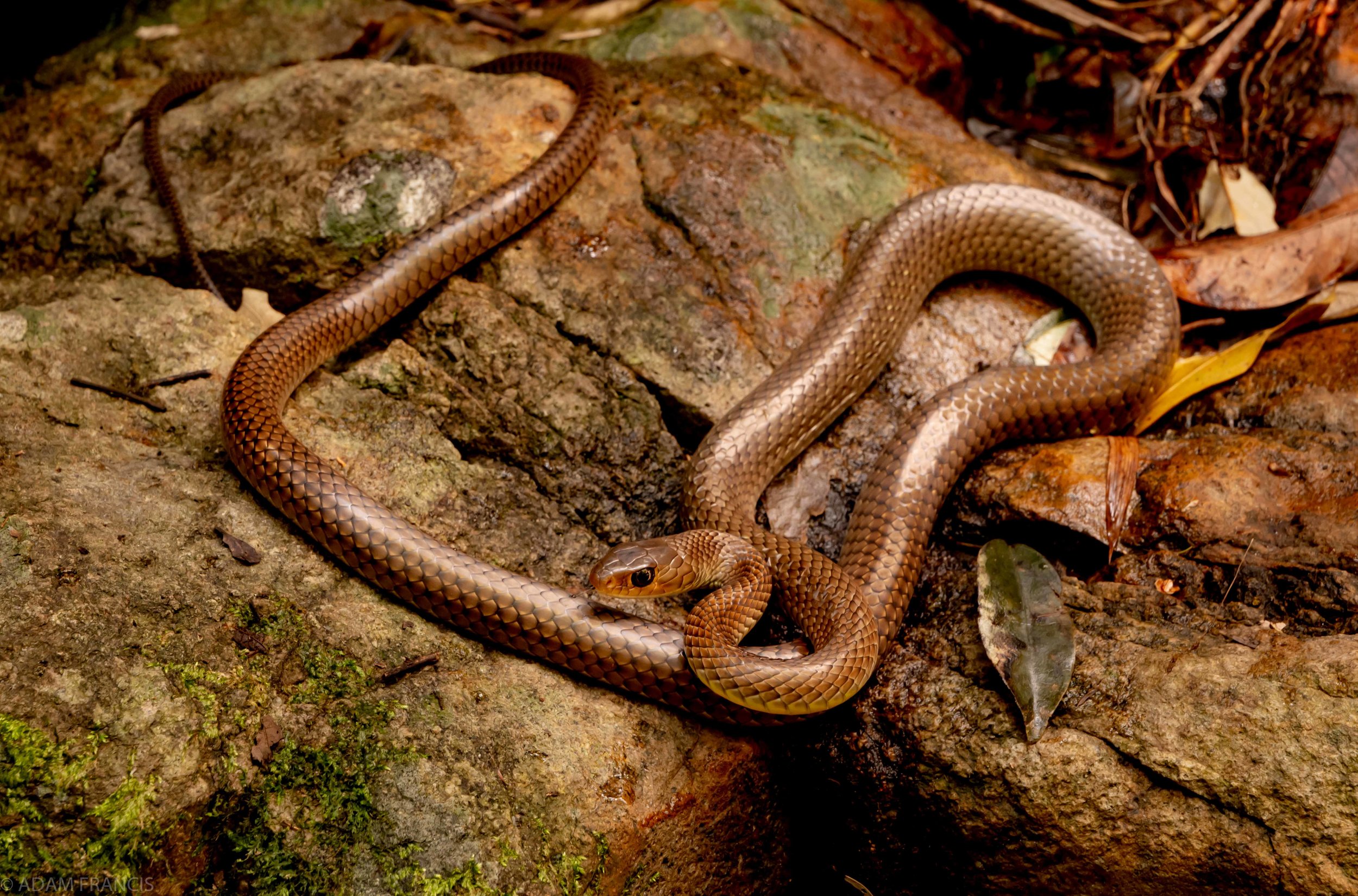
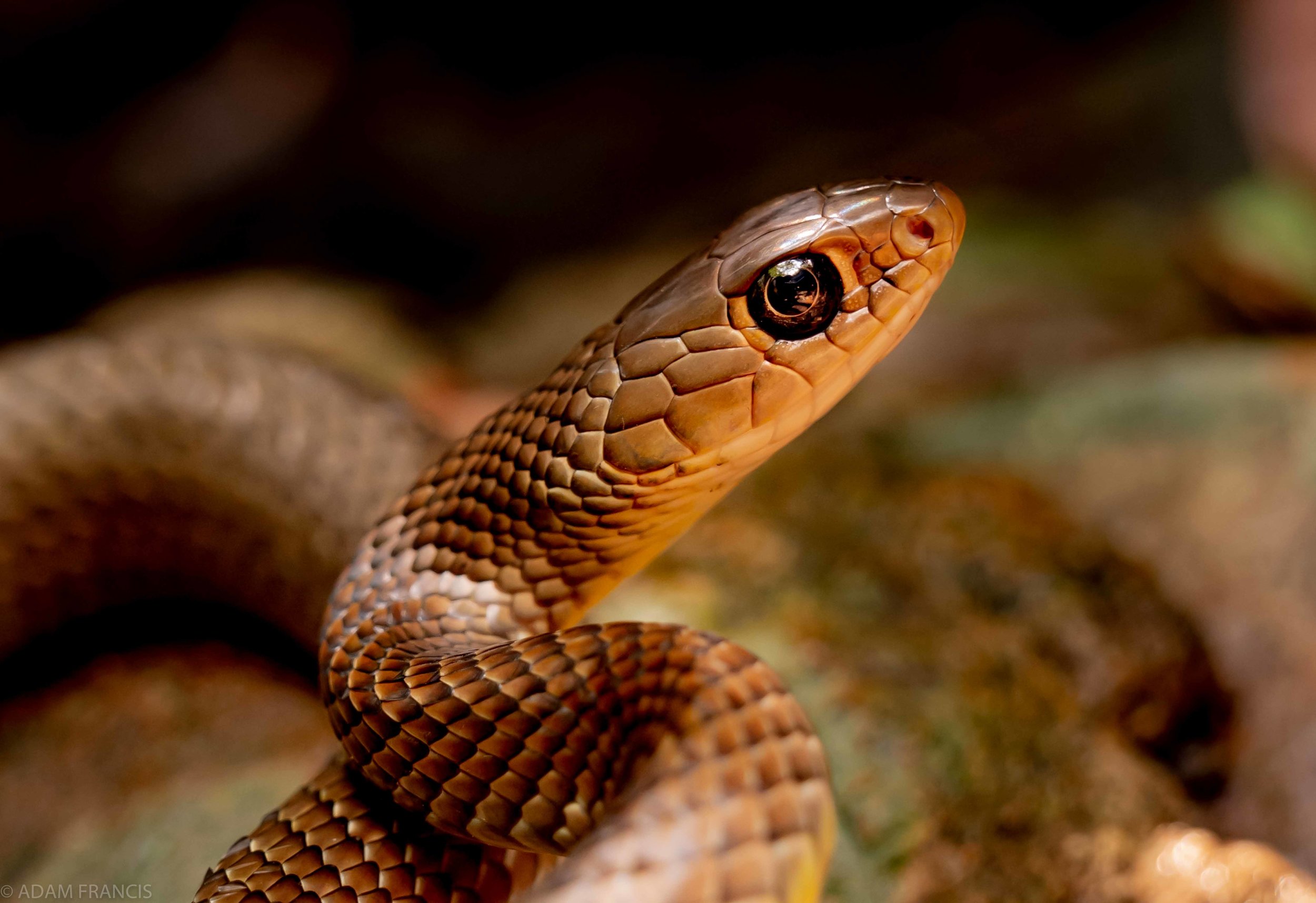

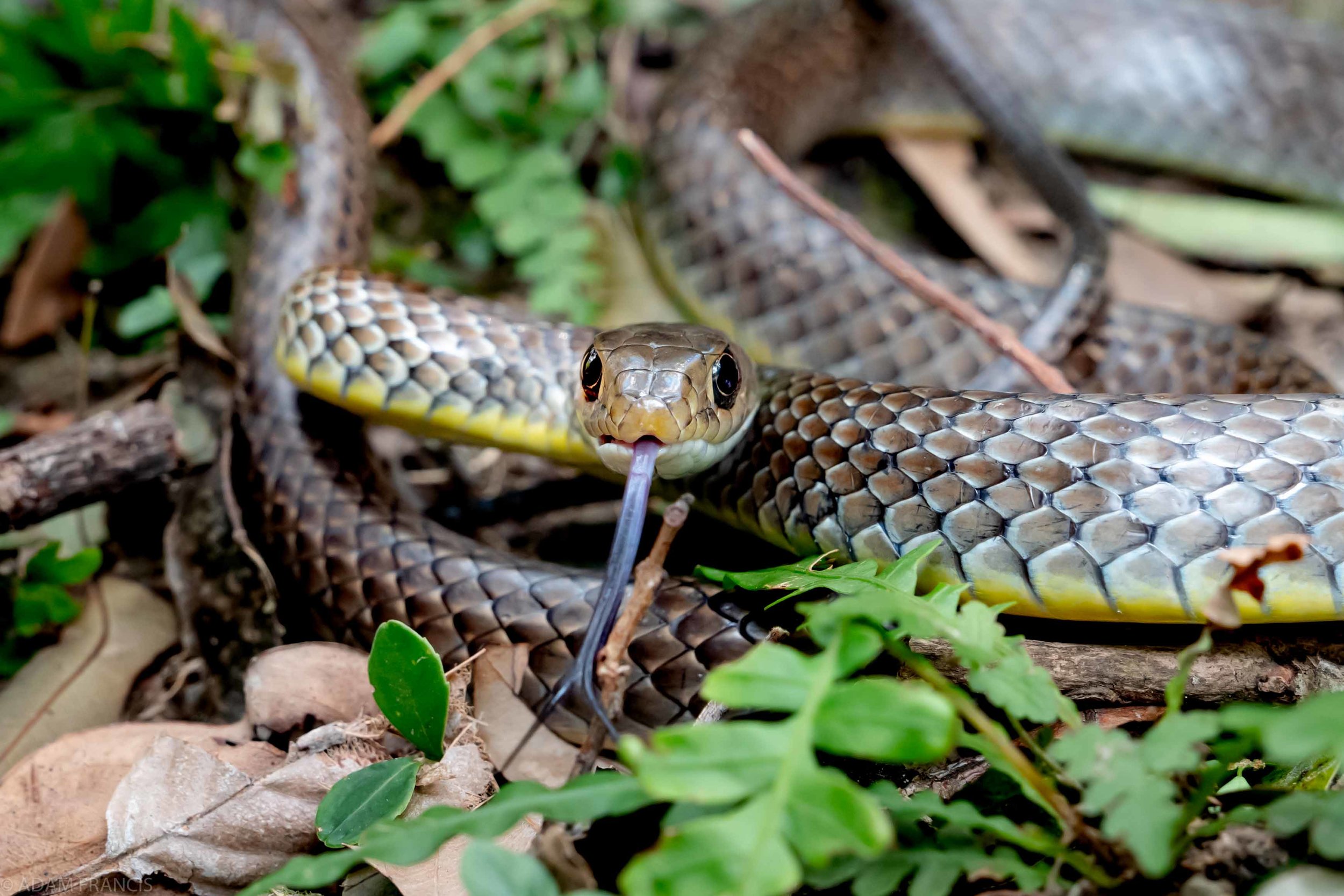

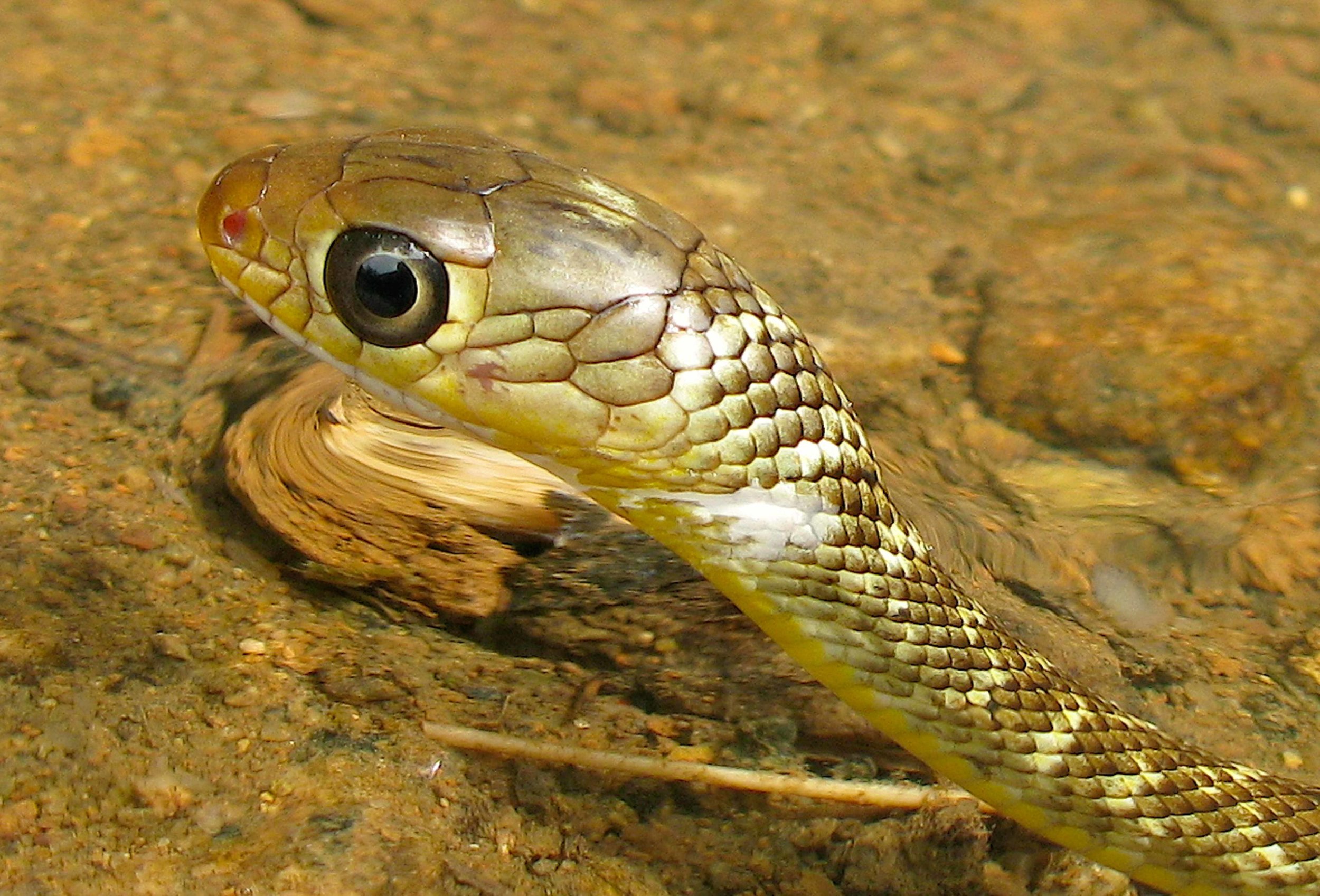
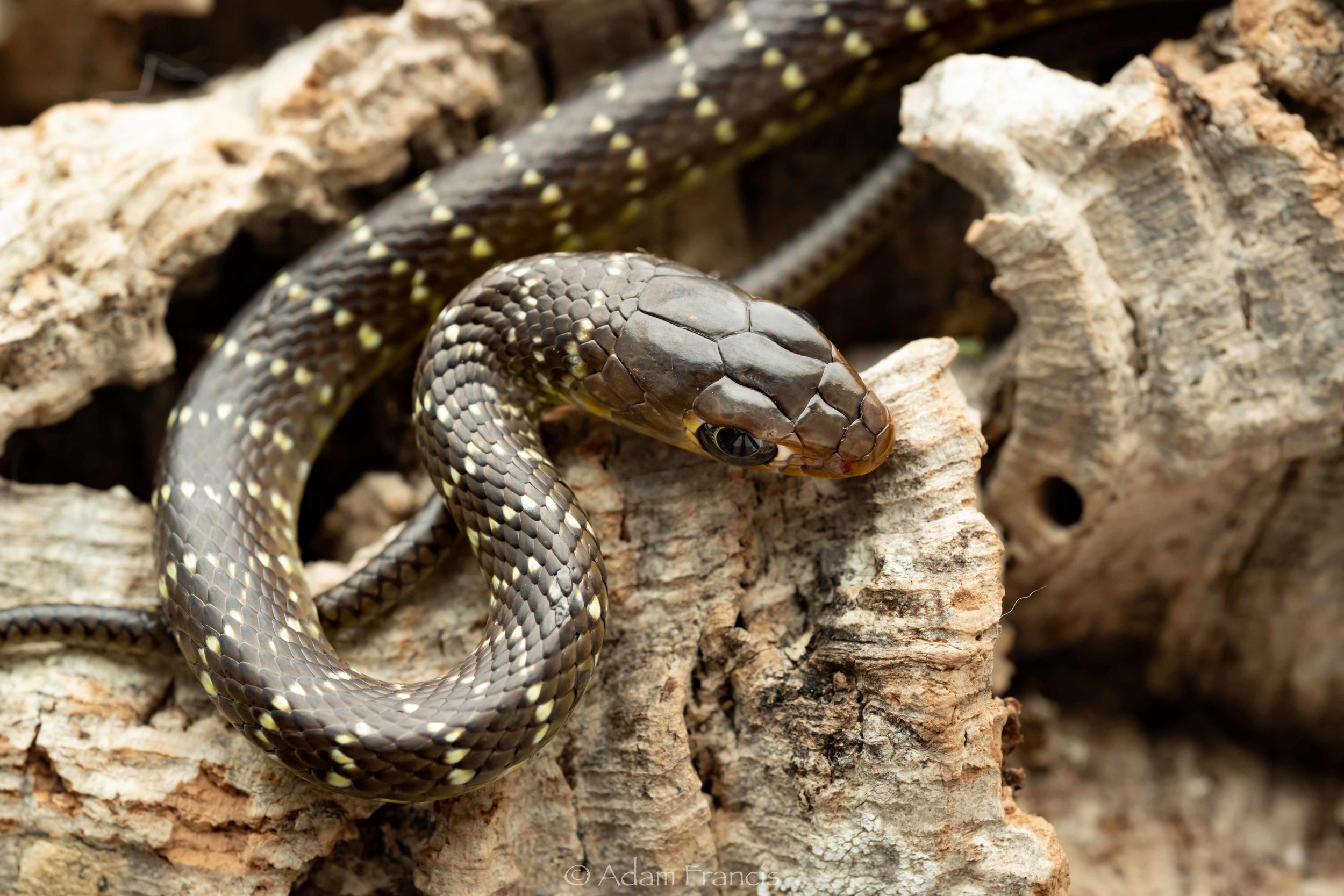
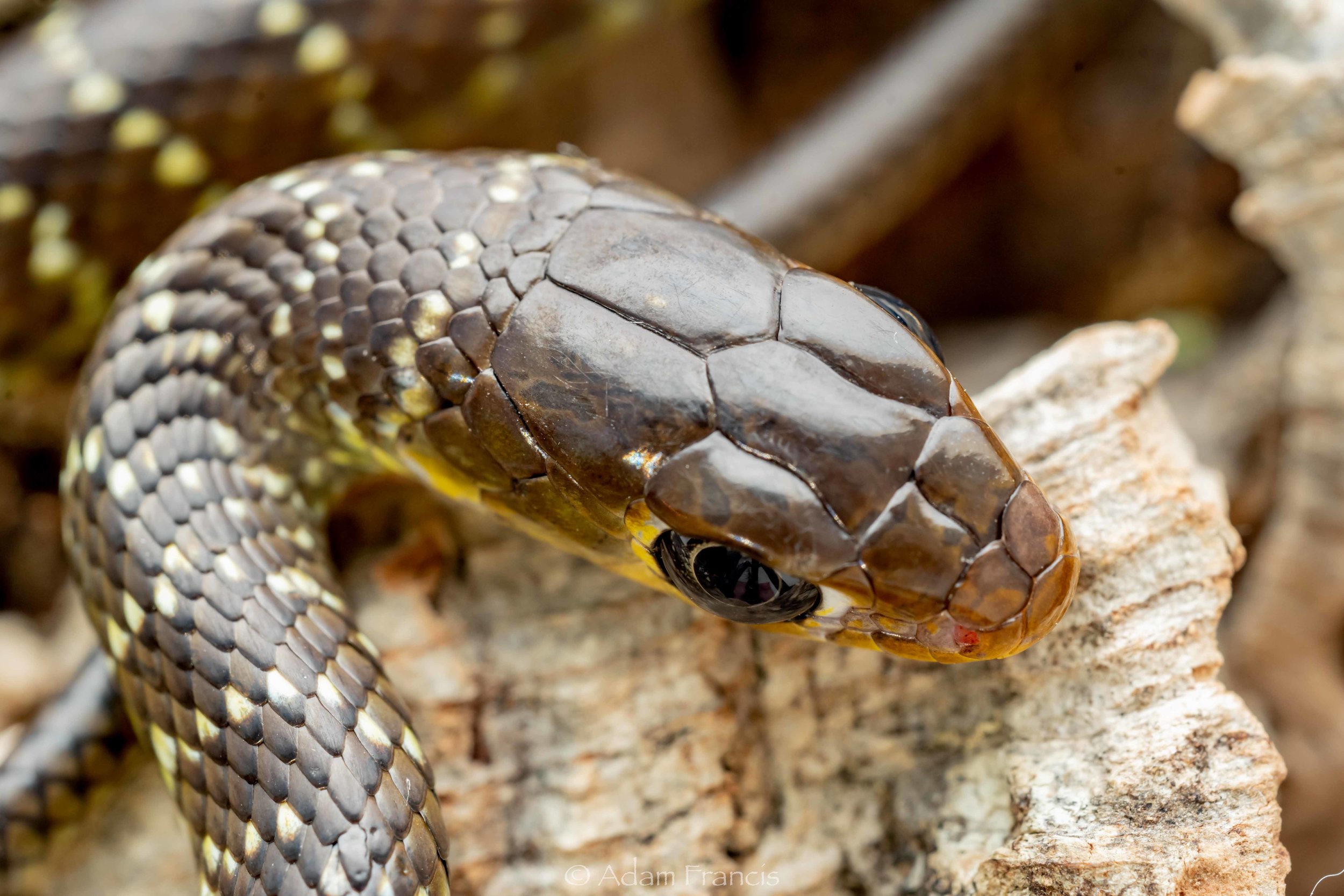
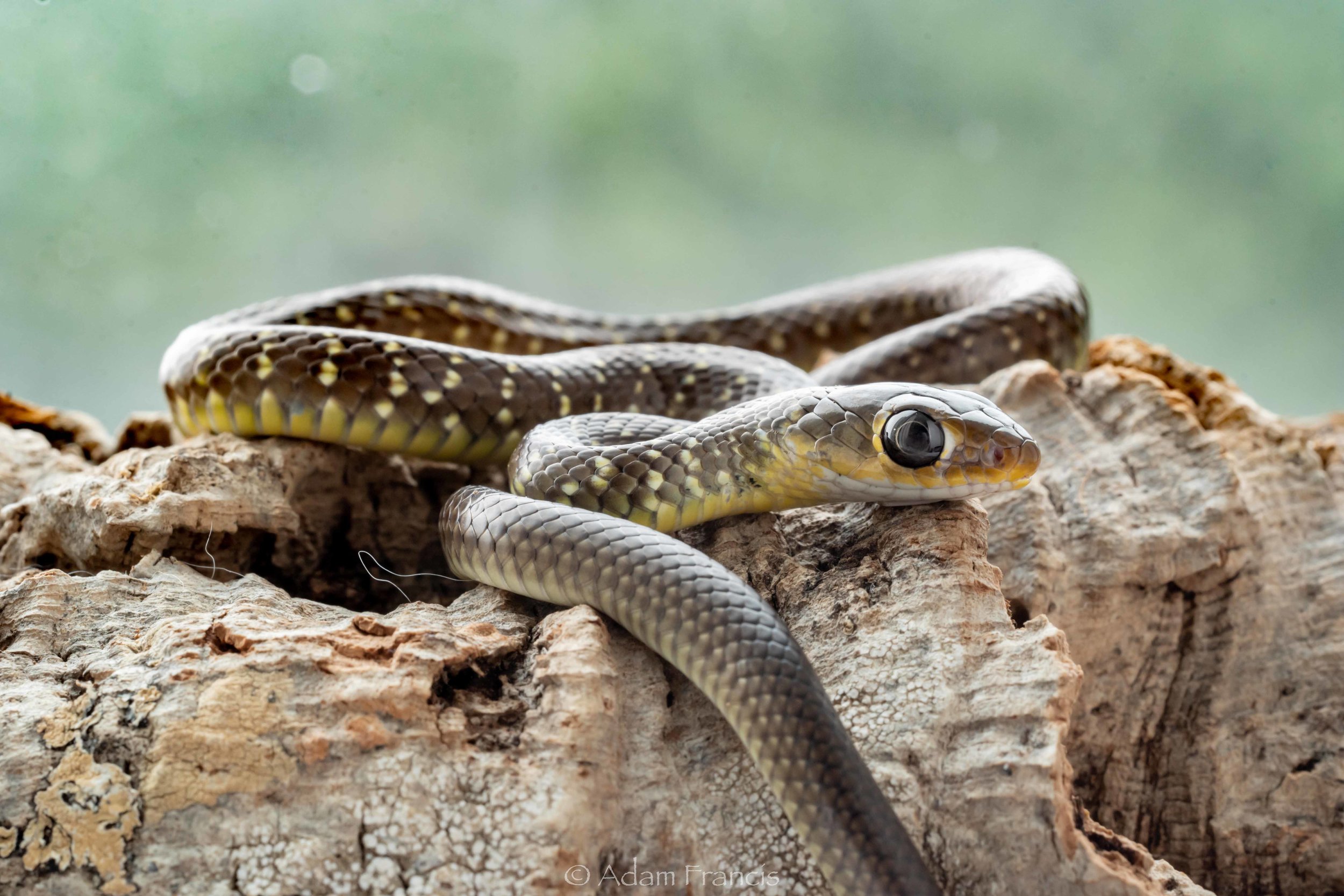
DESCRIPTION
Generally brown or tan in color with faint lateral stripes visible on some specimens. Juveniles showing distinct vertical spotted banding running the length of the body. Occasionally bluish grey. A lean snake, the Indo Chinese Rat Snake is slender relative to its length and when fully grown will be 3-4cm in diameter at just under 2 meters long. Large round eyes with round pupils on a slender head usually flat color on top with larger scales.
BEHAVIOR
The Indo Chinese Rat Snake as with all rat snakes will puff up their neck when threatened. Their neck expands vertically making them look taller rather than displaying the notorious 'hood' seen on cobra species. A harmless defensive tactic but can be unsettling for the inexperienced. These snakes will almost always flee extremely quickly if they sense you approaching and despite a bite from a mature specimen being a bit painful they pose almost no danger to humans and have no venom.
HABITAT
Indo Chinese Rat Snakes are found all over Hong Kong including Hong Kong Island. They eat rodents, lizards and occasionally birds and as such can be found from forested areas to areas around lakes and rivers as well as water culverts and jogging trails. Active during the day they are frequently encountered in Hong Kong.
MISTAKEN IDENTITY
NO SNAKE SHOULD EVER BE HANDLED BY ANYONE BUT EXPERTS: Indo Chinese Rat Snakes can often look similar to Chinese Cobras and King Cobras at a quick glance due to their colors, patterns and general size/shape. Because of this and their propensity to bite they should be observed at a distance and never approached or handled, not that you'd have a good chance of catching one even if you tried!


